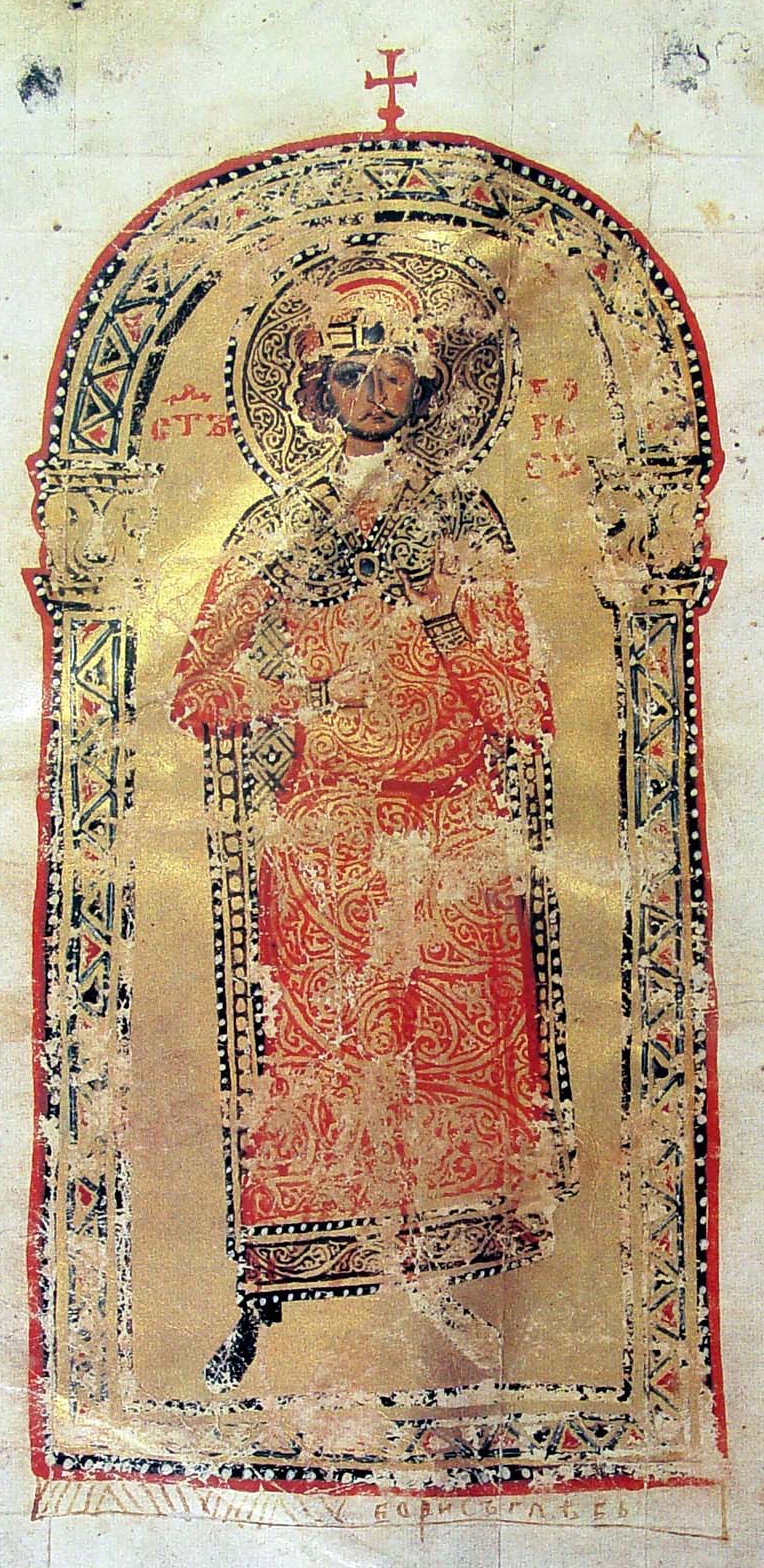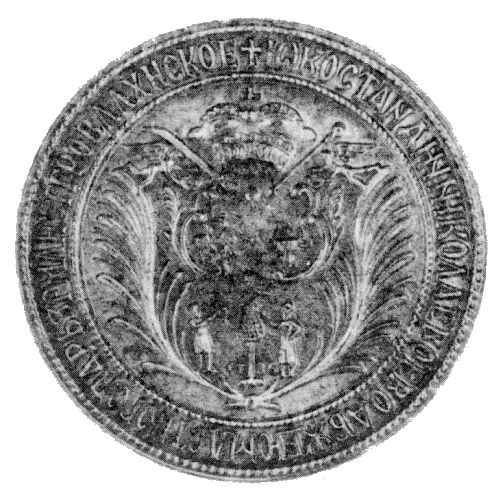|
Serfdom In Moldavia And Wallachia
Serfdom in Moldavia and Wallachia was common between 15th and 18th centuries, replacing the autonomous communities named "obște" that were common particularly before the founding of the medieval states of Wallachia and Moldavia. While initially the serfs were allowed to change the estate on which they lived (sometimes in exchange for a sum of money paid to the boyar), gradually some restrictions were set up, making the serfs Names A generic name for serfs was ''șerb'' (from Latin ''servus'', "slave", cognate with serf), but they also had some regional names: ''vecini'' in Moldavia (in today's language meaning "neighbour") and ''rumâni'' in Wallachia.Djuvara, p.246 The latter was actually the native ethnonym of Romanians; Neagu Djuvara explains it by the fact that in the Middle Ages, the landlords may have been foreign, Slavic or Cuman. History Origins Originally, Romanians lived in autonomous communities called "obște", which mixed private and common ownership, employing an op ... [...More Info...] [...Related Items...] OR: [Wikipedia] [Google] [Baidu] |
Obște
The obște (pl. ''obști'') was an autonomous agricultural community of the Romanians of the Middle Ages. Mixing private and common ownership, the communities generally employed an open field system. The obști were usually based on one or more extended families. This system of organization was similar throughout the Romanian-inhabited areas and it generally receded as overlords assumed more power over the rural communities and as the peasants lost their freedom by becoming serfs. Etymology The word '' obște'' is of Slavic origin, its original meaning being "common", referring to the common ownership and usage of the fields. Nevertheless, the organization system is assumed to predate the Slavic contact, previously the word for community being '' cătun'' (cognate with Albanian '' katund''), a word that changed its meaning in modern Romanian into "hamlet" or "mountain village".Russu, p. 228 Characteristics The villages, autonomous and lacking a political superstructure, employed the ... [...More Info...] [...Related Items...] OR: [Wikipedia] [Google] [Baidu] |
Knyaz
, or (Old Church Slavonic: Кнѧзь) is a historical Slavic title, used both as a royal and noble title in different times of history and different ancient Slavic lands. It is usually translated into English as prince or duke, depending on specific historical context and the potentially known Latin equivalents of the title for each bearer of the name. In Latin sources the title is usually translated as , but the word was originally derived from the common Germanic (king). The female form transliterated from Bulgarian and Russian is (), in Slovene and Serbo-Croatian (Serbian Cyrillic: ), ''kniahinia'' (княгіня) in Belarusian and ''kniazioŭna'' (князёўна) is the daughter of the prince, (княгиня) in Ukrainian. In Russian, the daughter of a knyaz is (). In Russian, the son of a knyaz is ( in its old form). The title is pronounced and written similarly in different European languages. In Serbo-Croatian and some West Slavic languages, the w ... [...More Info...] [...Related Items...] OR: [Wikipedia] [Google] [Baidu] |
Social History Of Romania
Social organisms, including human(s), live collectively in interacting populations. This interaction is considered social whether they are aware of it or not, and whether the exchange is voluntary or not. Etymology The word "social" derives from the Latin word ''socii'' ("allies"). It is particularly derived from the Italian ''Socii'' states, historical allies of the Roman Republic (although they rebelled against Rome in the Social War of 91–87 BC). Social theorists In the view of Karl MarxMorrison, Ken. ''Marx, Durkheim, Weber. Formations of modern social thought'', human beings are intrinsically, necessarily and by definition social beings who, beyond being "gregarious creatures", cannot survive and meet their needs other than through social co-operation and association. Their social characteristics are therefore to a large extent an objectively given fact, stamped on them from birth and affirmed by socialization In sociology, socialization or socialisation (see spellin ... [...More Info...] [...Related Items...] OR: [Wikipedia] [Google] [Baidu] |
Serfdom
Serfdom was the status of many peasants under feudalism, specifically relating to manorialism, and similar systems. It was a condition of debt bondage and indentured servitude with similarities to and differences from slavery, which developed during the Late Antiquity and Early Middle Ages in Europe and lasted in some countries until the mid-19th century. Unlike slaves, serfs could not be bought, sold, or traded individually though they could, depending on the area, be sold together with land. The kholops in Russia, by contrast, could be traded like regular slaves, could be abused with no rights over their own bodies, could not leave the land they were bound to, and could marry only with their lord's permission. Serfs who occupied a plot of land were required to work for the lord of the manor who owned that land. In return, they were entitled to protection, justice, and the right to cultivate certain fields within the manor to maintain their own subsistence. Serfs were ... [...More Info...] [...Related Items...] OR: [Wikipedia] [Google] [Baidu] |
Humanitas Publishing House
Humanitas ( ro, Editura Humanitas) is an independent Romanian publishing house, founded on February 1, 1990 (after the Romanian Revolution) in Bucharest by the philosopher Gabriel Liiceanu, based on a state-owned publishing house, Editura Politică. Its slogan is ''Humanitas, bunul gust al libertăţii'' ("Humanitas, the good taste of freedom"). During its first years, Humanitas mainly published authors from the Romanian diaspora, whose works had been subject to censorship or banning in Communist Romania; they include Emil Cioran, Mircea Eliade, and Eugène Ionesco. Currently, Humanitas publishes literature, books on philosophy, religion, social and political sciences, history, memoirs, popular science, children's literature, and self-help books. Main Romanian authors published by Humanitas * Lucian Blaga * Lucian Boia * Mircea Cărtărescu * Emil Cioran * Lena Constante * Petru Creţia * Neagu Djuvara * Mircea Eliade * Paul Goma * Virgil Ierunca * Eugène Ionesco * Gabriel Lii ... [...More Info...] [...Related Items...] OR: [Wikipedia] [Google] [Baidu] |
Slavery In Romania
Slavery existed on the territory of present-day Romania from the founding of the principalities of Wallachia and Moldavia in 13th–14th century, until it was abolished in stages during the 1840s and 1850s before the independence of the United Principalities of Moldavia and Wallachia was allowed, and also until 1783, in Transylvania and Bukovina (parts of the Habsburg monarchy). Most of the slaves were of Romani (Gypsy) ethnicity. Particularly in Moldavia there were also slaves of Tatar ethnicity, probably prisoners captured from the wars with the Nogai and Crimean Tatars. Romani slaves belonged to boyars (aristocrats), Orthodox monasteries, or the state. They were used as blacksmiths, goldsmiths and agricultural workers, but when the principalities were urbanized, they also served as servants. The abolition of slavery was achieved at the end of a campaign by young revolutionaries influenced by the ideas of the Enlightenment. Mihail Kogălniceanu, who drafted the legislati ... [...More Info...] [...Related Items...] OR: [Wikipedia] [Google] [Baidu] |
Boyars Of Moldavia And Wallachia
The boyars of Moldavia and Wallachia were the nobility of the Danubian Principalities of Moldavia and Wallachia. The title was either inherited or granted by the Hospodar, often together with an administrative function.Djuvara, p.131 The boyars held much of the political power in the principalities and, until the Phanariote era, they elected the Hospodar. As such, until the 19th century, the system oscillated between an oligarchy and an autocracy with the power concentrated in the hospodar's hands.Djuvara, p.135 Origins During the Middle Ages, Romanians lived in autonomous communities called obște which mixed private and common ownership, employing an open field system. The private ownership of land gained ground In the 14th and 15th centuries, leading to differences within the obște towards a stratification of the members of the community.Costăchel et al., p. 111 The name of the "boyars" (''boier'' in Romanian; the institution being called ''boierie'') was patented from the ... [...More Info...] [...Related Items...] OR: [Wikipedia] [Google] [Baidu] |
Constantine Mavrocordatos
Constantine Mavrocordatos ( Greek: Κωνσταντίνος Μαυροκορδάτος, Romanian: ''Constantin Mavrocordat''; February 27, 1711November 23, 1769) was a Greek noble who served as Prince of Wallachia and Prince of Moldavia at several intervals between 1730 and 1769. As a ruler he issued reforms in the laws of each of the two Danubian Principalities, ensuring a more adequate taxation and a series of measures amounting to the emancipation of serfs and a more humane treatment of slaves. Life First rules Born in Constantinople (now Istanbul) as a Phanariote member of the Mavrocordatos family, Constantine succeeded his father, Nicholas Mavrocordatos, as Prince of Wallachia in 1730, after obtaining boyar support. He was deprived in the same year, but again ruled the principality five more times from 1731 to 1733, from 1735 to 1741, from 1744 to 1748, from 1756 and 1758 and from 1761 to 1763. He managed to regain control over Oltenia (the Banat of Craiova) thro ... [...More Info...] [...Related Items...] OR: [Wikipedia] [Google] [Baidu] |
Transylvania
Transylvania ( ro, Ardeal or ; hu, Erdély; german: Siebenbürgen) is a historical and cultural region in Central Europe, encompassing central Romania. To the east and south its natural border is the Carpathian Mountains, and to the west the Apuseni Mountains. Broader definitions of Transylvania also include the western and northwestern Romanian regions of Crișana and Maramureș, and occasionally Banat. Transylvania is known for the scenery of its Carpathian landscape and its rich history. It also contains Romania's second-largest city, Cluj-Napoca, and other iconic cities and towns such as Brașov, Sibiu, Târgu Mureș, Alba Iulia and Sighișoara. It is also the home of some of Romania's UNESCO World Heritage Sites such as the Villages with fortified churches, the Historic Centre of Sighișoara, the Dacian Fortresses of the Orăștie Mountains and the Roșia Montană Mining Cultural Landscape. It was under the rule of the Agathyrsi, part of the Dacian Kingd ... [...More Info...] [...Related Items...] OR: [Wikipedia] [Google] [Baidu] |
Boyars Of Wallachia And Moldavia
The boyars of Moldavia and Wallachia were the nobility of the Danubian Principalities of Moldavia and Wallachia. The title was either inherited or granted by the Hospodar, often together with an administrative function.Djuvara, p.131 The boyars held much of the political power in the principalities and, until the Phanariote era, they elected the Hospodar. As such, until the 19th century, the system oscillated between an oligarchy and an autocracy with the power concentrated in the hospodar's hands.Djuvara, p.135 Origins During the Middle Ages, Romanians lived in autonomous communities called obște which mixed private and common ownership, employing an open field system. The private ownership of land gained ground In the 14th and 15th centuries, leading to differences within the obște towards a stratification of the members of the community.Costăchel et al., p. 111 The name of the "boyars" (''boier'' in Romanian; the institution being called ''boierie'') was patented from the ... [...More Info...] [...Related Items...] OR: [Wikipedia] [Google] [Baidu] |
Wallachia
Wallachia or Walachia (; ro, Țara Românească, lit=The Romanian Land' or 'The Romanian Country, ; archaic: ', Romanian Cyrillic alphabet: ) is a historical and geographical region of Romania. It is situated north of the Lower Danube and south of the Southern Carpathians. Wallachia is traditionally divided into two sections, Muntenia (Greater Wallachia) and Oltenia (Lesser Wallachia). Dobruja could sometimes be considered a third section due to its proximity and brief rule over it. Wallachia as a whole is sometimes referred to as Muntenia through identification with the larger of the two traditional sections. Wallachia was founded as a principality in the early 14th century by Basarab I after a rebellion against Charles I of Hungary, although the first mention of the territory of Wallachia west of the river Olt dates to a charter given to the voivode Seneslau in 1246 by Béla IV of Hungary. In 1417, Wallachia was forced to accept the suzerainty of the Ottoman Emp ... [...More Info...] [...Related Items...] OR: [Wikipedia] [Google] [Baidu] |






